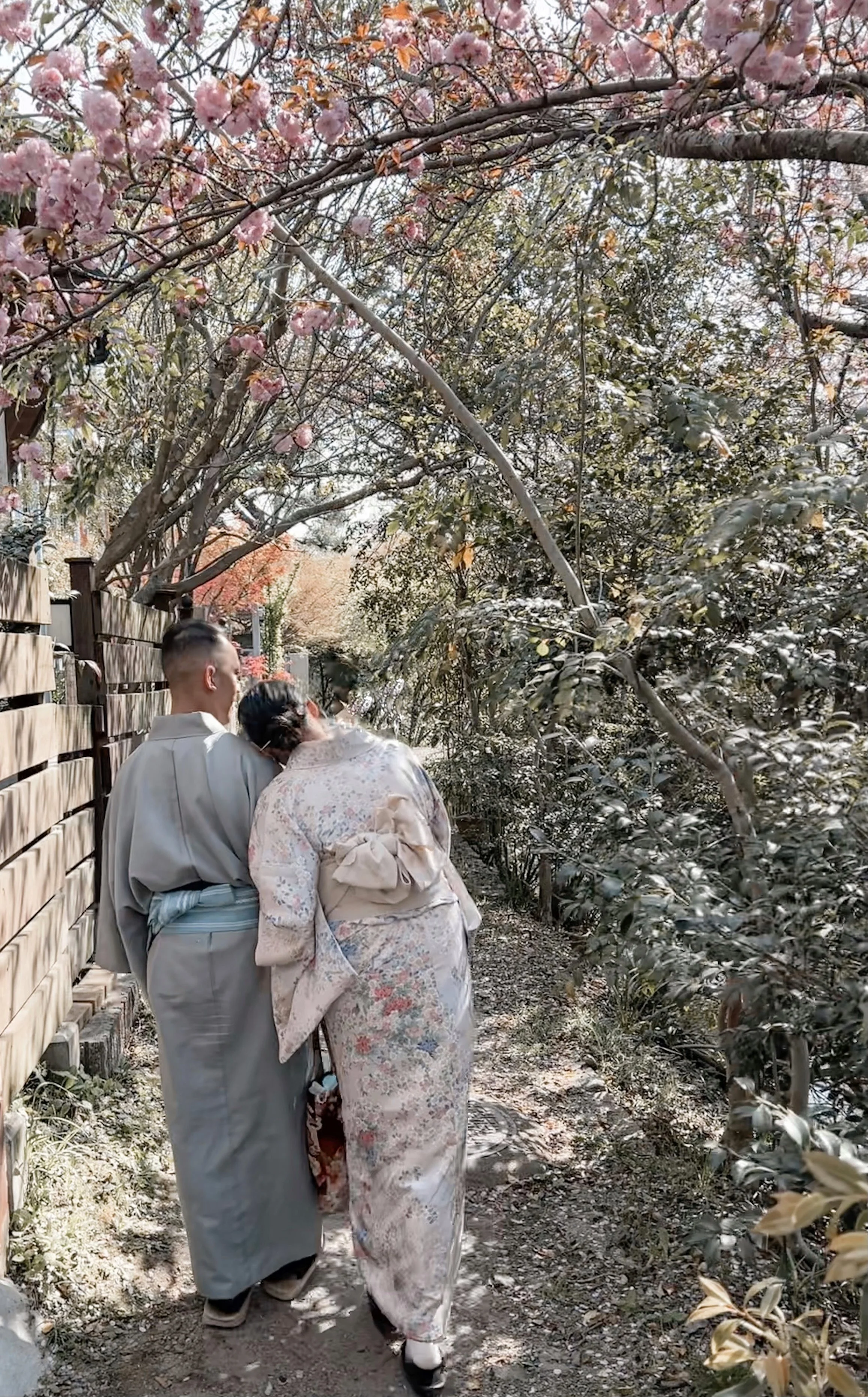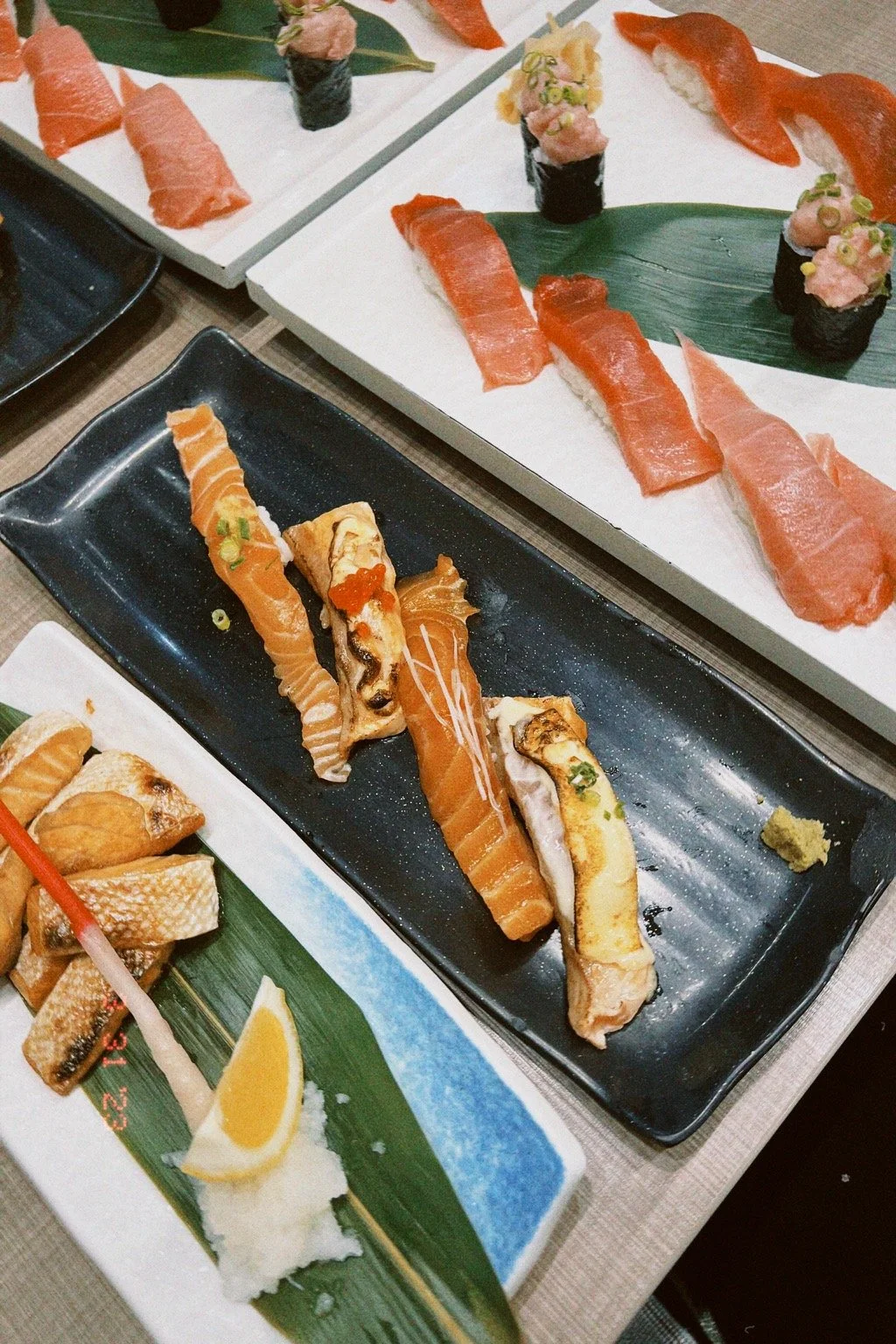Japan Essentials
If this is your first time visiting Japan—we’re so excited for you! It’s an incredible place full of culture, beauty, and thoughtful details. Here are a few helpful tips to make your trip smooth and enjoyable:
Passport
When shopping in Japan, always bring your passport—especially if you plan to shop at department stores. Many retailers offer tax-free shopping for visitors on purchases over a certain amount (usually ¥5,000).
You may be asked at checkout if you'd like to make your purchase tax-free—just show your passport to qualify.
Tax-free policies may change in the future (especially looking ahead to 2026), but for now, it’s a great perk for travelers!
Tip: Tax-free items are usually sealed at purchase and may need to remain unopened until you leave the country.
Convenience Stores, Food, and Opening Hours
Convenience stores (aka conbini) like 7-Eleven, FamilyMart, and Lawson are everywhere—and they're amazing. Many are open 24/7, but hours can vary slightly by location, so it’s always good to double-check.
Breakfast tip: Grab a bite at 7-Eleven! The egg sandwiches ("egg sandos") are legendary. Want to mix it up? Head to FamilyMart, grab a Famichiki (fried chicken), and pair it with an egg sando. One word: fire.
Most shops, restaurants, and attractions open around 10:00 AM or 11:00 AM.
Be sure to check hours in advance, especially for smaller spots.
Some popular restaurants require reservations, while others operate on a first-come, first-served basis—lining up early is often part of the fun!
Visiting popular sights earlier in the day is a great way to avoid crowds and enjoy a more relaxed experience.
Tip
Tipping is not expected in Japan—and in many cases, it can even cause confusion! Excellent service is the standard and already included in your experience.
In restaurants, cafes, taxis, hotels, or salons, there’s no need to tip.
If you leave money behind, staff will often chase you down to return it (really!).
Language
While not everyone in Japan speaks English, people are incredibly kind and eager to help. You’ll find that major cities like Kyoto and Osaka often feel more English-friendly than Tokyo, especially in tourist areas, restaurants, and hotels.
For everything else, translation apps like Google Translate are super handy—especially the camera mode, which lets you hover over menus or signs to see instant translations.
Trains & Transit
Public transportation is by far the easiest and most convenient way to get around Japan—especially in Tokyo and other cities.
Before you arrive:
We recommend getting a mobile IC card like Suica or Pasmo. These are reloadable transit cards that let you tap in and out of trains, subways, and buses with ease—no need to buy individual tickets every time.
iPhone users can download the Suica or Pasmo app to use the card digitally.
Or, if you prefer, you can buy a physical IC card at the airport right when you land, before you catch your first train. You’ll need to reload it at train stations (cash only!)
For taxis:
You can use the Uber app to get around.
Another popular option is the “Go” Taxi app, widely used for reliable local taxi rides.
Traveling with Luggages
If you’re planning to take the train with your luggage, be prepared for stairs—many stations have limited elevators or escalators, especially at smaller stops. Traveling light is highly recommended, particularly if you'll be moving between cities.
Here are a few helpful tips:
Large luggage on the Shinkansen (bullet train) now requires a seat reservation with luggage space if your bag is over 160 cm (combined height + width + depth). When booking your ticket, look for the “seat with oversized baggage area” option.
You can also avoid the hassle altogether by using Japan’s luggage forwarding service (like Yamato Ta-Q-Bin) to ship your bags from hotel to hotel—it’s super convenient, reliable, and fairly priced.
If you’re planning to shop, consider packing an empty duffel bag or an extra suitcase for the return trip.
Smaller, wheeled bags are ideal for navigating station crowds and tight spaces.
In short: travel light, stay mobile, and enjoy the journey!
Cash & Cards
Bring enough Japanese yen (cash) for daily expenses, especially if you plan to visit smaller towns or local markets.
ATMs at 7-Eleven convenience stores and post offices generally accept international cards and are the most reliable for withdrawing yen. Consider exchange at the airport when you land.
Major credit cards like Visa, MasterCard, and American Express are accepted at many places, but it’s a good idea to carry some cash just in case.
Etiquette Basics
Out of respect for local customs, we do our best to follow Japanese etiquette—and we encourage our guests to do the same!
Keep it quiet on public transportation – It’s customary to speak softly (or not at all) on trains and buses.
Carry your trash – Public bins are rare, so it’s common to hold onto your garbage until you find a place to throw it away.
Avoid eating or drinking while walking – It's best to finish snacks and drinks where you buy them or sit down to enjoy.
Follow the flow of foot traffic – Especially in busy stations and streets, keep to one side and go with the flow.
No street drinking in some areas at night – Certain districts like Shibuya prohibit drinking alcohol in public spaces after a specific time (often after 6pm).
A little awareness goes a long way—and locals really appreciate the effort.
Wifi & SiM Card
If your phone plan includes international coverage, you're all set.
If not, no worries! You have a couple of easy options:
Pocket Wi-Fi: You can rent a pocket Wi-Fi device at the airport or online before your trip. It’s a portable hotspot and you can connect multiple devices.
eSIM: you can purchase an eSIM for Japan. (we recommend this option! talk to Billy for options)
Airbnb vs. Hotel
HotelMost offer English-speaking staff
If you arrive early, hotels will usually hold your luggage for you until check-in.
Great for taking advantage of Japan’s luggage forwarding services—you can ship your bags directly from hotel to hotel.
AirbnbIdeal for groups who want to stay together in a shared space.
Often includes a kitchen, laundry, and more room to spread out.
Check-in is typically around 4:00 PM so plan ahead if you arrive early.
You can store your bags at coin lockers or luggage storage shops near train stations—just make sure to have yen coins on hand.
Jess + Billy’s Favorite Places in Japan
We’ve fallen in love with Japan over the years—from morning 7/11 egg sando runs to late-night izakayas in Tokyo and the unbeatable street food in Osaka. We hope you saved some time to explore Japan and we wanted to share the places that made us smile, slow down, or say “wow.” These are the restaurants we keep going back to, the neighborhoods we could wander forever, and the moments that made Japan feel like magic. Consider day trips to Hakone (onsen town) or Kamakura (sea town). We definitely recommend! :)
Japan is a fantastic place to pick up custom items—from personalized clothing at Uniqlo, Nike, and Adidas, to unique keepsakes like engraved rings or custom chopsticks. It's a great way to take home something special and one-of-a-kind.
Here’s our favorites to eating, exploring in the three main cities: Tokyo, Kyoto, and Osaka.
Tokyo
\
Tokyo \
im donut
mister donut
Bambi Coffee
Hatoya (Matcha)
DotComSpace Coffee
Aman Dacotan (Bakery)
0 second lemon sours (Japanese BBQ + Lemon Sours Drinks)
sushi no midori
Sushi sato
Dagashiya
Ichiran Ramen
Coco Ichibanya (Curry)
Butagumi (Tonkatsu)
Omoide Yokocho Memory Lane (Yakitori/Izakayas)
Golden Gai Bars
Nanaya Gelato
SG Club (Bar)
Sound Bar Howl (Bar)
The Bellwood (Bar)
Record Bar Analog
Mixology Saloon (Bar)
Shibuya Crossing
Chidorigafuchi Park
Shibuya Sky
Team Labs Planet Tokyo (Odaiba)
Tokyo Tower
Tokyo Skytree
Pokemon Center
Nakameguro River (Cherry Blossoms)
Meiji Jingu Shrine
Shibuya Sakura Stage
Sensoji Temple
Godzilla Head in Shinjuku
Tokyo Disney Sea
Gundam Statue (Odaiba)
Beams Shinjuku (Flagship Store, other locations in Ginza, Shibuya)
Kith Tokyo
Tokyo Plaza Harujuku
Parco
Kappabashi District (Kitchen + Ceramics)
Female Clothing: Coen, Journal Standard, Lumine est, Laruta
Desert Snow (vintage)
Uniqlo (12 Floors in Ginza)
Ginza Six Mall
Loft (locations at Shibuya, Ginza, Ikebukuro, etc.)
Hands
Don Quijote (souvenirs)
Kyoto
\
Kyoto \
Hatoya Matcha
Nanaya Gelato
Micasadeco & Cafe
Nishiki Market
Ipoodo Tea
Kichi Kichi
Gion Ichiho / Kinugawa / Sushi Ishimatsu
Curry & tempura koisus
Totaro Kyoto
Watabe (Unagi)
Fushimi Inari Shrine
Arashiyama Park / Bamboo Forest
Philosipher’s Path
Kikanku Ji (Golden Temple)
Gion District
Kimono Rentals
Kennin-J
Tofuku-Ji
Nara Park
Pokemon Center
The North Face Standard
Snow Peak
Kyoto Bal
Le Labo Kyoto
Compasso Teramachi
Beams
Osaka Castle
Umeda Sky Building
Osaka Aquarium
Asahi Beer Museum
Namba Yasaka Jinja (Lion Head)
Murou Art Forest
Universal Studios
Dotonburi (nightlife)
0 Second Lemon Sours
Kuromon Market
Shinsekai District (Street Food/Bars)
Hozenji Yokocho (izakayas + bars)
Dotunburi (Street Food)
Patisserie Grenier
Yakiniku Kitan
Kirip Truman (Bar)
Bara Shiki (Bar)
Bar Nayuta (Bar)
Kith Osaka
Thrifting/Vintage
Daimaru
Parco




